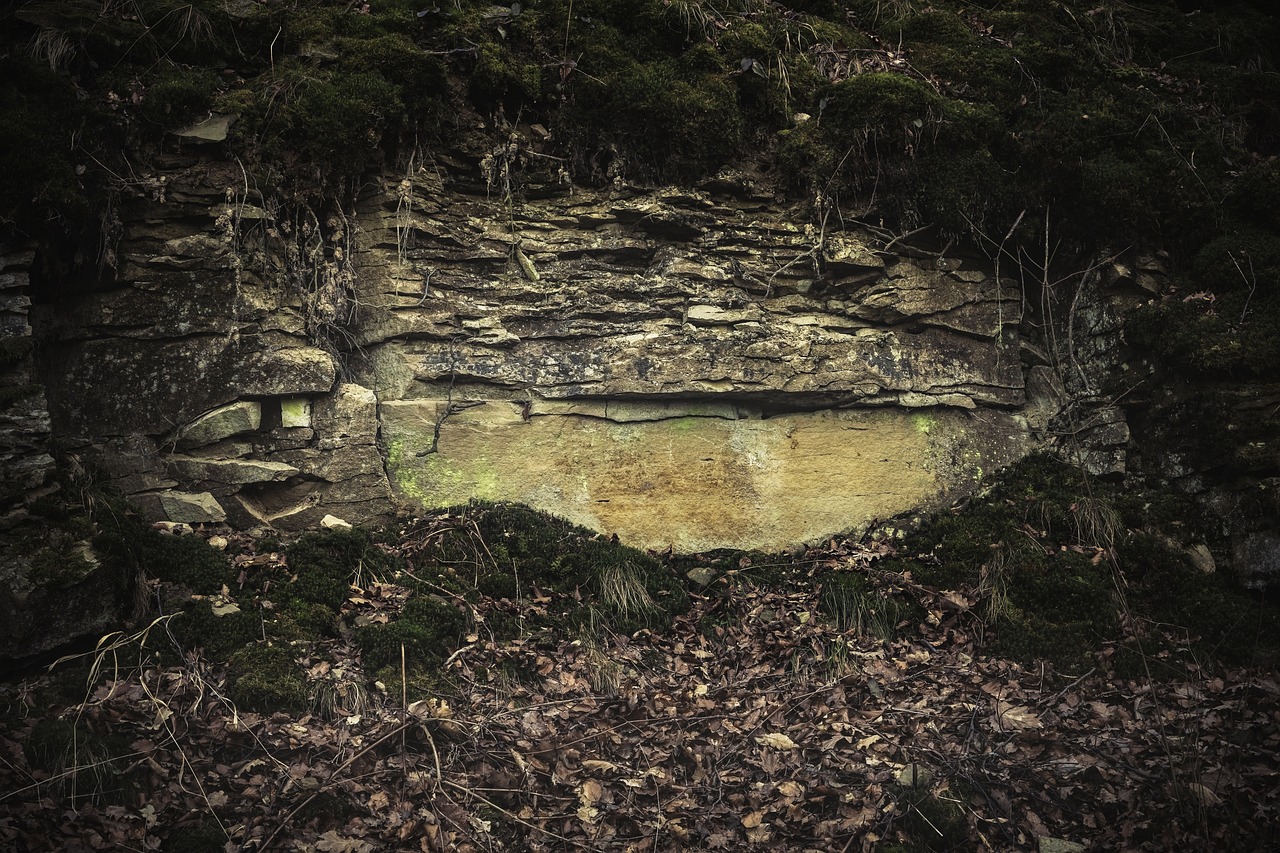The American West - Myths and Realities
Exploring the romanticized myths and historical realities of the American West reveals a complex tapestry of narratives that have shaped the region's identity. The allure of the Wild West, with its tales of cowboys, outlaws, and gold rushes, has captured the imagination of generations. However, behind these captivating stories lie the harsh truths of colonization, environmental consequences, and the resilience of diverse communities.
Manifest Destiny, the belief that the expansion of the United States across the continent was both justified and inevitable, played a significant role in shaping the American West. This ideology fueled westward expansion but also led to conflicts with Native American tribes and environmental degradation. The legacy of Manifest Destiny continues to influence how we perceive the history of the American West today.
Native American perspectives offer a crucial counterpoint to the dominant narratives of westward expansion. The colonization and settlement of the American West brought immense suffering and displacement to indigenous tribes, whose voices are often marginalized in historical accounts. Understanding the experiences and struggles of Native Americans is essential to gaining a more nuanced perspective on the complexities of the region's history.
The Gold Rush epitomized the dreams of wealth and opportunity that drew people to the American West, yet the reality of frontier life was far from glamorous. Harsh conditions, lawlessness, and economic disparities characterized daily existence for many settlers. The contrast between the myth of the West as a land of opportunity and the harsh realities of survival paints a vivid picture of the challenges faced by those who ventured into the unknown.
Cowboys and outlaws have become enduring symbols of the American West, immortalized in countless books and films. Separating fact from fiction, however, reveals a more nuanced picture of these figures. While some cowboys embodied the spirit of independence and adventure, others were enmeshed in violence and criminal activities. Exploring the complexities of their lives sheds light on the diverse realities of the frontier.
Women played diverse and often overlooked roles in the American West, contributing to the region's development in myriad ways. From homesteading and ranching to activism and entrepreneurship, women defied traditional gender norms to shape their communities. Challenging the stereotypes of the passive pioneer woman, their stories highlight the resilience and agency of women in the face of adversity.
The expansion of railroads revolutionized transportation and commerce in the American West, connecting distant regions and facilitating rapid growth. The development of rail networks not only transformed the landscape but also had profound social and economic impacts on local communities. The legacy of railroads in shaping the West's identity remains palpable to this day.
Westward expansion brought significant environmental consequences, including the depletion of natural resources and the disruption of ecosystems. The displacement of wildlife and indigenous plants had lasting effects on the region's biodiversity. Reflecting on these environmental impacts prompts us to consider the delicate balance between progress and preservation in the ongoing development of the American West.
In conclusion, the American West embodies a rich tapestry of myths and realities that continue to shape our understanding of the nation's history. By critically examining the narratives that have defined the region, we can gain a deeper appreciation for the complexities and contradictions that characterize the legacy of the American West.

Manifest Destiny
Exploring the romanticized myths and historical realities of the American West, this article delves into the iconic narratives and the actual events that shaped the region's history.
The concept of Manifest Destiny was a powerful belief that drove the expansion of the American West during the 19th century. It was the idea that the United States was destined by a higher power to expand its territory across the continent. This ideology fueled westward migration, territorial acquisitions, and the displacement of indigenous peoples.
Manifest Destiny had both positive and negative consequences. On one hand, it led to the growth of the nation, the development of new industries, and the spread of American ideals. On the other hand, it resulted in the forced removal of Native American tribes from their lands, conflicts over territory, and environmental degradation.
It was a notion that justified the conquest and subjugation of others in the name of progress and civilization. The legacy of Manifest Destiny continues to be debated, with some viewing it as a noble mission of expansion and others as a dark chapter of American history stained with bloodshed and injustice.
Stay tuned for answers to some common questions about the myths and realities of the American West!

Native American Perspectives
When exploring the on the colonization and settlement of the American West, it is crucial to delve into the often-overlooked viewpoints of the indigenous tribes that inhabited the land long before the arrival of European settlers. Native American perspectives provide a stark contrast to the romanticized narratives of westward expansion, shedding light on the harsh realities and struggles faced by the original inhabitants of the region.
For centuries, Native American tribes had established complex societies, cultures, and spiritual connections with the land in the American West. The arrival of European colonizers brought about a wave of violence, displacement, and cultural erasure that forever altered the lives of indigenous peoples. The forced relocation of tribes, broken treaties, and the loss of traditional territories had devastating consequences on Native American communities.
Moreover, the exploitation of natural resources, including land and minerals, disrupted the delicate balance of ecosystems that Native Americans had coexisted with for generations. The environmental impact of westward expansion not only affected the livelihoods of indigenous peoples but also led to the degradation of sacred sites and the depletion of vital resources.
Despite facing immense challenges and injustices, Native American tribes have persevered and continue to advocate for their rights, sovereignty, and cultural preservation. The resilience and strength of indigenous communities in the face of historical trauma and ongoing struggles reflect a deep connection to their ancestral lands and a commitment to future generations.
It is essential to recognize and honor the diverse perspectives and experiences of Native American tribes in discussions about the American West. By amplifying indigenous voices and acknowledging the legacy of colonization, we can move towards a more inclusive and truthful understanding of the complex history of the region.

Gold Rush and Frontier Life
Exploring the romanticized myths and historical realities of the American West, this article delves into the iconic narratives and the actual events that shaped the region's history.
The Gold Rush of the 19th century symbolizes the epitome of the American Dream - a promise of quick riches and a chance for a new beginning. As news of gold discoveries spread like wildfire, thousands of hopeful prospectors flocked to the West, driven by the allure of striking it rich. The reality, however, was far harsher than the glittering dreams that lured them.
Life on the frontier was rugged and unforgiving, with miners facing extreme weather conditions, lawlessness, and scarce resources. The boomtowns that sprang up overnight were bustling hubs of activity, but also hotbeds of violence and chaos. The Gold Rush brought both fortune and despair, as only a few struck gold while many others toiled endlessly without success.
Amidst the chaos of the Gold Rush, a unique society emerged in the West, where individuals from diverse backgrounds came together in pursuit of a common goal. The frontier life was a melting pot of cultures, shaping a new identity that was both resilient and adaptable. It was a time of rapid change and constant challenges, where survival depended on grit, luck, and sheer determination.

Cowboys and Outlaws
When it comes to the American West, the images of rugged cowboys and notorious outlaws often come to mind, painting a vivid picture of a lawless and adventurous frontier. However, the reality behind these iconic figures is a complex tapestry of fact and fiction, where myths and realities intertwine to create a captivating narrative.
Cowboys, with their wide-brimmed hats and trusty lassos, have been immortalized in countless Western films and novels as daring heroes of the open range. But beyond the romanticized portrayals lie the hardships and challenges faced by these cattle herders. The life of a cowboy was far from glamorous, filled with long hours of work under the scorching sun, herding cattle across vast expanses of land.
On the other side of the coin, outlaws like Billy the Kid and Jesse James have become legendary figures in American folklore, known for their daring escapades and run-ins with the law. While their exploits have been sensationalized in popular culture, the harsh realities of their actions cannot be overlooked. Outlaws often resorted to violence and crime as a means of survival in a harsh and unforgiving environment.
Separating fact from fiction when it comes to cowboys and outlaws is essential in understanding the true history of the American West. While the Wild West may have been a place of excitement and adventure, it was also a place of struggle and hardship for those trying to make a living on the frontier.

Women in the West
When delving into the history of the American West, it is essential to shine a spotlight on the often overshadowed but vital roles played by women in shaping the frontier. Contrary to the traditional narratives that often glorify the rugged masculinity of the Wild West, women were integral to the development and survival of western communities. From homesteaders and ranchers to entrepreneurs and activists, women in the American West defied societal expectations and carved out their own paths in a challenging and unforgiving landscape.
One remarkable aspect of women's experiences in the West was their resilience in the face of adversity. Whether facing harsh environmental conditions, economic hardships, or social constraints, women displayed remarkable strength and resourcefulness. They took on diverse roles, from maintaining households and raising children to participating in business ventures and advocating for social change. The frontier demanded resilience, and women in the American West rose to the occasion with courage and determination.
Moreover, the multicultural nature of the American West provided a unique backdrop for women to interact and collaborate across different ethnic and cultural backgrounds. Women from various backgrounds, including Native American, Hispanic, African American, and European descent, navigated the complex social fabric of the frontier, forming bonds of solidarity and mutual support. These diverse interactions enriched the cultural tapestry of the American West and contributed to the resilience and adaptability of western communities.
Despite facing significant challenges and obstacles, women in the American West made lasting contributions that shaped the region's development and legacy. Their stories of perseverance, innovation, and leadership deserve recognition and celebration alongside the more familiar tales of cowboys and outlaws. By acknowledging the diverse experiences of women in the West, we gain a more comprehensive understanding of the complexities and realities of frontier life.

Railroads and Expansion
Railroads played a pivotal role in the expansion of the American West, shaping the landscape and connecting distant regions in unprecedented ways. The development of rail networks revolutionized transportation and commerce, facilitating the movement of people, goods, and ideas across vast distances. As iron tracks crisscrossed the frontier, previously isolated settlements were linked together, fostering economic growth and cultural exchange.
One of the most significant impacts of railroads on the American West was the acceleration of westward expansion. The construction of transcontinental railroads, such as the Union Pacific and Central Pacific lines, opened up new territories for settlement and development. Towns sprang up along rail routes, serving as hubs of trade and communication. The speed and efficiency of rail transport transformed the once arduous journey west into a more accessible and manageable undertaking.
Furthermore, railroads played a crucial role in the exploitation of natural resources in the West. Mines, ranches, and farms relied on rail connections to transport their products to markets in the East. The ability to transport large quantities of goods over long distances quickly and reliably revolutionized the economic landscape of the region, fueling growth and prosperity.
However, the expansion of railroads also had its drawbacks. The rapid construction of rail lines often led to environmental degradation, as forests were cleared, rivers diverted, and wildlife habitats disrupted to make way for tracks and infrastructure. The impact of railroads on the ecosystem raised concerns about sustainability and conservation, prompting calls for responsible development practices.
In conclusion, the advent of railroads in the American West marked a transformative chapter in the region's history, shaping its physical, economic, and social landscape in profound ways. The legacy of railroads continues to be felt today, as the remnants of old tracks and stations stand as reminders of the pioneering spirit and ingenuity that drove the expansion of the American West.

Environmental Consequences
Exploring the romanticized myths and historical realities of the American West, this article delves into the iconic narratives and the actual events that shaped the region's history.
Discussing the ideology of Manifest Destiny and its impact on the expansion of the American West, examining both the positive and negative consequences of this belief.
Exploring the often-overlooked viewpoints of Native American tribes regarding the colonization and settlement of the American West, shedding light on their experiences and struggles.
Investigating the allure of the Gold Rush and the harsh realities of frontier life in the American West, contrasting the dreams of wealth with the challenges of survival.
Unpacking the myths and realities surrounding cowboys and outlaws in the American West, separating fact from fiction in the popularized stories of the Wild West.
Examining the roles and contributions of women in the American West, challenging traditional narratives to highlight the diverse experiences and challenges faced by women on the frontier.
Tracing the impact of railroads on the expansion of the American West, exploring how the development of rail networks transformed the landscape and connected distant regions.
Addressing the environmental consequences of westward expansion, from the depletion of natural resources to the displacement of wildlife and indigenous plants, evaluating the long-term effects on the ecosystem.
Reflecting on the enduring legacy of the American West in shaping the nation's identity, examining how myths and realities continue to influence contemporary perceptions of the region.
Stay tuned for the FAQ section to find answers to common queries about the American West!

Legacy of the American West
The legacy of the American West is a complex tapestry woven with threads of myth and reality, shaping the identity of a nation and leaving an indelible mark on history. As the sun sets over the rugged landscapes of the West, it casts long shadows of both triumph and tragedy, painting a picture of resilience and reckoning.
One of the enduring legacies of the American West is the spirit of rugged individualism and frontier justice that still echoes through the canyons and prairies. The image of the lone cowboy riding into the sunset embodies the ideals of independence and self-reliance that have become synonymous with the American ethos.
However, beneath the romanticized facade of the Wild West lies a darker legacy of violence, exploitation, and displacement. The clash of cultures between settlers and Native American tribes left scars that continue to reverberate through generations, reminding us of the high cost of westward expansion.
The legacy of the American West also extends to the environmental impact of human activity on the land. The relentless pursuit of resources and the rapid pace of development have left scars on the landscape, altering ecosystems and endangering wildlife.
Yet, amidst the complexities and contradictions of the American West's legacy, there is also a legacy of resilience and adaptation. The stories of survival and perseverance in the face of adversity serve as a testament to the human spirit's capacity to endure and overcome challenges.
As we reflect on the legacy of the American West, we are confronted with a legacy that is both inspiring and sobering, a reminder of the enduring power of myth and the enduring realities that shape our understanding of the past and present.

